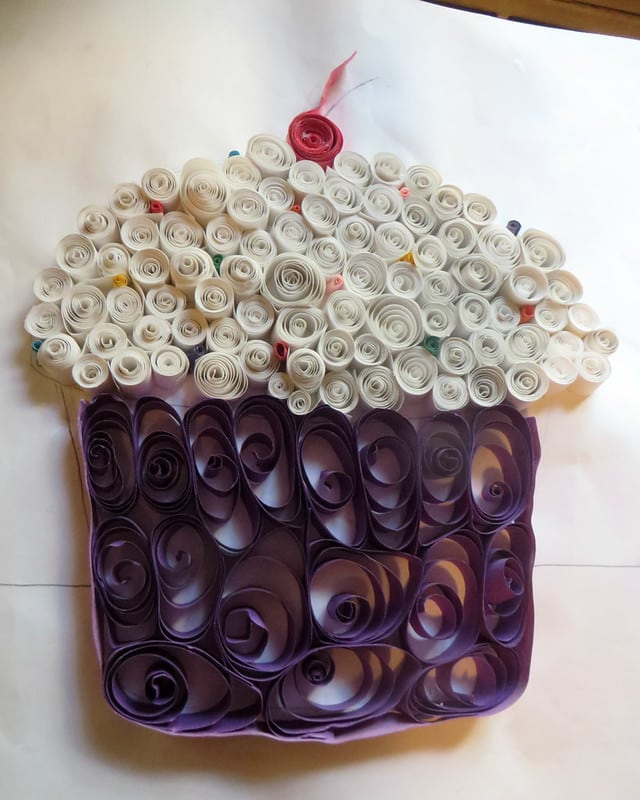Paper quilling is a fascinating craft that you can learn to create three-dimensional artwork. While it may look like all you have to do is twist some paper, that isn’t the case. Once you try it yourself, you’ll see how challenging it can be to twist and roll a strip to get the desired look. Just like other kinds of artwork, it takes immense practice, and so many people stop trying giving it a couple of tries.
Note that if you use the right techniques, tools, and paper, you can easily master your technique. The best tip is to start small and practice as much as you can before moving on to large, difficult projects.
Paper Quilling Basics To Know
Opt for Colorful Backgrounds
As a beginner, you might think that white is the best background to draw the eyes towards your paper quilling artwork. While this is technically true, it can distract you from continuing your quilling project.
A white background makes every little edge and imperfection stand out, essentially putting it under a microscope. When you choose a colorful background that complements your project, it prevents you from paying too much attention to unnoticeable things. This way, you’ll be less rigid about how the project looks, and be more flexible when it comes to minor imperfections. It will help you focus on what will please the viewers- the complete picture in your quilling project.
Work on the Center of every Coil
Generally, most artists use needle coil to make a perfect center of each coil. However, if you use the right techniques, you can use a slotted tool to get the same results.
The best method to go around the center is to keep turning your even when you have reached the end of your paper strip. You need to do this until your tool gives way. This procedure allows your tool to tear a tiny part of the strip that would have been the crimp, giving you an ideal coil shape. Furthermore, if you find it challenging to twist your tool, you can opt for a piercing tool or pin to eliminate the crimp after shaping your strip.
Consider Using Pre-Cut Paper Strips
Beginners can opt for to make the process easy and quick. Your first few attempts at quilling paper will offer better results if you begin your journey with machine-cut papers.
When you learn basic quilling techniques, you can start cutting your paper strips and experiment with different types of strips. Note that if try cutting your own strips from the get-go, you risk getting stuck at this step. You might end up spending more time trying to cut proper strips instead of learning to roll and quill paper, causing you to lose interest.
Start Small
Yes, we know that you are attracted to complex and massive appealing designs, but it’s foolish to start with large paper quilling projects. Since you are not accustomed to the techniques, tools, and quilling designs, your first project may be your last if you choose something too difficult. In fact, it may be impossible to finish as well.
So, start by choosing small and easy designs for your first project. These projects will encourage feelings of accomplishment and success. Small projects also offer an opportunity to perfect your technique and practice different quilling methods quickly. Since bigger and complex projects require more than one quilling technique, you can start those once you’ve tried out a bunch of different methods. In other words, once you have mastered simple projects, you can move on to complicated designs.
Use Right Methods to Apply Glue
When joining each piece of your project together, try to be cautious. You need to use a small amount of glue on your paper shapes. Too much on paper can damage it and ruin your designs. If you want to avoid wasting your time starting over, spray or apply a small amount of glue.
Keep in mind that you can always add more glue, but you can’t go back once you add too much. If you’re wondering how you’ll glue the pieces after sticking them together, you can use any pointy tool that helps apply glue in the smallest spaces. You can even use the tip of your slotted tool.
Practice Basic Paper Quilling Shapes
Before starting any project, practice different quilling shapes. You can also create a quilling shape journal so that once you begin a project, you don’t have to stop for practice. In this case, you can make different shapes and stick them on paper. Write the name of each shape with the design so you can identify that shapes easily when needed. This way, you will have a reference journal or paper that you can look at while working on projects.
After making your guidebook, paper, or cardboard, practice each shape as many times as you can. So, when the time comes to start your first project, you don’t face any trouble
Invest in Paper Quilling Patterns
In the beginning, it’s best to get plenty of guidance to improve your learning curve. For this reason, some newbies use premade and find it quite interesting to make their first few designs.
You can find several quilling patterns in the market at an affordable cost. You can even download a couple of simple patterns from online platforms for free. On top of that, they are printable patterns that help you polish your skills. The best part is that both online or market designs detail the project’s method. It’s a good way to practice quilling without needing to experiment: just follow the guide to impress your friends and family with your classy, artistic piece.
Use a Needle Form
Experts suggest using a needle form before quilling combs because they’re tricky and require more time. You’re probably avoiding using them again to put less effort into your project. But before you give up on quilling combs, try this technique: roll a quill with the help of a needle form. Now, place your coil on your quilling comb to make a perfect shape.
When you will use the needle from the beginning and opt for a , you get the perfect center of your coil. This provides incredible results in the end.
Bring Nippers to Fix Problems
Whether you’re a beginner or an expert, there is always the risk of making mistakes. It’s possible that many of your designs have small bloopers somewhere in between or towards the corners.
For this reason, people use cuticle nippers. This tool is easily available at drugstores and supermarkets. Cuticle nippers can work best to remove extra glue on your project or snip off an uneven corner.
Bottom Line
Paper quilling is as challenging as calligraphy and sculpting. It needs effort, time, and complete attention to get excellent results. If you’re a beginner, try investing in pre-cut strips and the right tools. Furthermore, give your workstation a colorful background to avoid falling into a loop of noticing little mistakes. Once you’re a professional, you will not need to care for these little tips as they will just come naturally.







